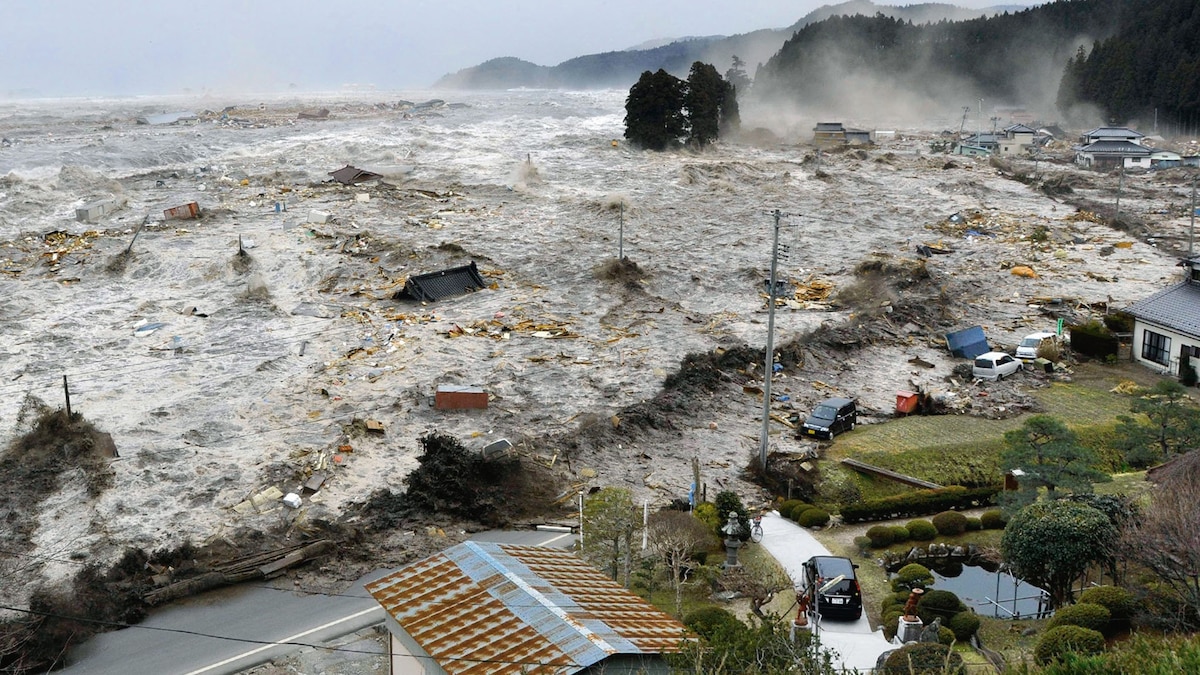The word Tsunami comes from Japanese — tsu (harbor) and nami (wave). It is a series of large ocean waves caused by sudden displacement of a large volume of water.
Key Characteristics of Tsunamis
- Wavelength – Very long (up to 200 km).
- Period – Wave intervals 10–60 minutes.
- Speed – Travel 700–900 km/h in deep sea.
- Amplitude (Deep Sea) – Small height (0.5–2 m).
- Shoaling Effect – Slow down, height rises near coasts.
- Wave Train – Multiple waves; later waves often larger.
- Energy – Cross oceans with little energy loss.

Causes of Tsunami Generation:
- Undersea Earthquakes – Sudden tectonic plate movement along subduction zones displaces ocean water. Eg– 2004 Indian Ocean Tsunami, caused by a 9.1 magnitude earthquake off Sumatra. In 2025, a M8.8 quake off Kamchatka (Russia) triggered a Pacific-wide tsunami with 17–19 m runup in Kamchatka and the Kurils islands
- Volcanic Eruptions – Submarine or coastal eruptions displace water. Eg– 1883 Krakatoa eruption in Indonesia.
- Landslides (Submarine or Coastal) – Large rock masses falling into the sea. Eg– 1958 Lituya Bay, Alaska, produced a 500m “megatsunami.”
- Glacial Calving or Meteor Impacts – Sudden collapse of ice shelves or asteroid strikes.
- Meteor / Asteroid Impacts – Rare but massive displacements of ocean water. Eg– Chicxulub impact (65 million years ago, linked to dinosaur extinction).
Where They Form:

Consequences of Tsunamis
- Human Casualties & Displacement – High death toll due to sudden impact. Eg– 2004 Indian Ocean Tsunami killed ~230,000 across 14 countries.
- Economic Losses – Destruction of infrastructure, ports, housing, tourism. Eg– 2011 Japan Tsunami caused ~$235 billion damage, world’s costliest disaster.
- Environmental Impacts – Coastal ecosystems (mangroves, coral reefs) damaged, soil salinization, loss of biodiversity. Eg– 2004 tsunami destroyed Andaman & Nicobar coral reefs.
- Nuclear and Industrial Risks – Eg– Fukushima nuclear plant meltdown (Japan, 2011).
- Social and Psychological Effects – Trauma, loss of livelihood, migration from coastal areas.
While tsunamis cannot be prevented, their catastrophic impact can be minimized through advanced early-warning systems, satellite-based monitoring, AI-driven risk modeling, and global data sharing.


